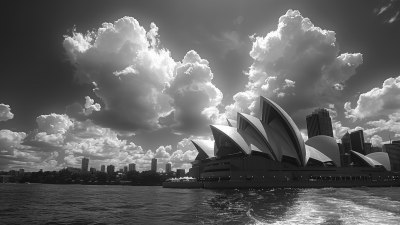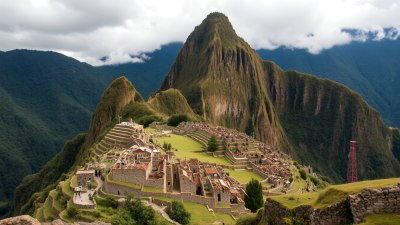The Distance Is an Illusion Measured in Memory
Exploring the concept of distance and its relationship with memory, perception, and emotional experience.

The concept of distance invokes various interpretations, often beyond mere physical separation. It refers not just to the miles that two individuals are apart but also to the emotional expanse created by memories, experiences, and perceptions. This perception of distance can sometimes overshadow the tangible reality, leading us to question: is distance truly a physical entity, or is it merely an illusion shaped by our memories?
The Nature of Distance
Distance is a multifaceted concept with definitions that can extend into physical, emotional, and psychological realms. When we ponder physical distance, we often think in terms of kilometers or miles. However, emotional or psychological distance is significantly more complex, encompassing feelings of intimacy, neglect, or longing.
For example, two people may live in close proximity yet feel worlds apart emotionally due to unresolved conflict or a lack of communication. Conversely, individuals separated by vast geographical distances may maintain a sense of closeness through shared experiences and memories. This illustrates the malleable nature of distance; it is not a fixed metric but rather a fluid construct influenced by human connection.
Memory as a Measuring Tool
Memory plays a crucial role in shaping our perception of distance. As we recall past experiences, our memories can pivot how we understand our current situation and emotional state. Memories often act as a bridge connecting us to people or places, infusing our perception with layers of meaning and significance.
Consider a childhood home where numerous memories are forged—playful afternoons, family gatherings, or even moments of solitude. When we return to this space, it may evoke nostalgia, drawing us back to an era that feels closer than the actual lapse of time would suggest. Our memories of that space can compress time and create an impression that the emotional distance is smaller than physical distance would imply.
The Science Behind Memory and Distance
The relationship between memory and perceived distance can also be supported by psychological theories. Cognitive psychology suggests that our memory systems categorize experiences into frameworks that can influence how we relate to various concepts, including distance. Thus, the memories we create lend meaning to our understanding of separation and proximity.
Research shows that distance can be perceived as shorter when one is emotionally connected to certain memories or people. For example, individuals reminiscing about fond times spent with a loved one who has passed may feel a strong emotional connection despite the physical absence, thus minimizing the perceived distance in their heart or mind.
Time and the Elasticity of Experience
Moreover, time exacerbates the fluidity of distance as memories are subject to change over the years. The longer we are away from a person or location, the more our memories may evolve. Positive recollection can distort our current understanding of distance, creating a nostalgic longing that makes the past seem closer than it may actually be.
This phenomenon illustrates the idea of temporal distortion; the more we emphasize certain memories, the nearer in time and emotion those experiences might feel. As a result, reunions can evoke strong emotions as the psychological distance diminishes, demonstrating the powerful interplay between memory and distance.
The Role of Technology in Bridging Distance
In our modern age, technology plays a fundamental role in bridging physical distances. Video calls and instant messaging allow individuals separated by continents to share moments in real-time, effectively reducing the emotional distance that might otherwise exist. As people interact through digital means, memories are built upon instant exchanges rather than limited to in-person experiences.
However, while technology has enabled us to feel closer, it also presents challenges. The virtual nature of communication can trigger different perceptions of distance as relationships might feel far more superficial. The balance between technological connection and genuine emotional experiences can distract from authentic relationships, obscuring the reality of distance in a digital age.
Examining Relationships Through Distance
The dynamics of relationships reveal much about the differences between physical and emotional distances. Long-distance relationships epitomize this exploration, as partners navigate a realm of separation that transcends geographical divides. Surviving such distances requires an acute awareness of each other’s emotional needs, cultivating emotional closeness to counter physical absence.
Through shared experiences—however mediated by screens or delayed responses—couples can work to maintain their bond. The currency of this interaction is memory; shared stories and emotional recollections become tools for minimizing perceived distance. In a way, the strength of these memories can determine whether the couple feels close or disconnected despite the physical miles standing in their way.
Art, Literature, and the Ideology of Distance
Artists and writers often delve into the complexities of distance as a theme, exploring how memory and longing shape the human experience. In literature, characters grappling with the fractured sense of distance often confront their pasts, revealing how memories color their journeys and relationships.
For instance, narratives that explore themes of exile or migration capture how individuals grapple with the emotional distance that accompanies physical relocation. These stories emphasize the nostalgia tied to memories—distilled moments of joy or sorrow that reflect the impact of distance on identity and belonging.
The Cultural Dimensions of Distance
Different cultures perceive and manage the concept of distance uniquely. In certain cultures, family ties are paramount, and physical distance is often overcome through strong familial connections maintained by memory. In contrast, cultures emphasizing individuality might cultivate independence, leading to a perception that physical distance is less significant than emotional autonomy.
This cultural approach to distance plays out in practices ranging from rituals to communication styles. Understanding these cultural nuances can enhance our awareness and appreciation of how distance affects human experiences across the globe.
Navigating the Complexity of Distance
Recognizing that distance is more than just a linear measurement allows us to navigate our relationships with greater empathy. When we understand that physical distances often become entwined with emotional connections, we can approach interactions with a tolerance that embraces compassion and understanding.
This awareness requires us to interrogate our personal perceptions of distance. Are we allowing memories to alter our experience of separation? Are we recognizing the emotional resonance of physical absence? By engaging with these questions, we may redefine our relationships, managing distance with intention rather than passive acceptance.
The Future of Distance in Human Experience
As our world continues to evolve and reshape notions of distance, our capacities to connect and reconcile differences will also transform. The challenges posed by geographical separation are not going away. Still, the insights into memory's role in shaping our experiences of distance will empower us to build more profound connections despite the miles or barriers that may lie between us.
In conclusion, the distance is an illusion measured in memory—a dynamic interplay between space and emotional depth. Whether we are nurturing relationships from afar or confronting our reflections of the past and longing, it is through the lens of memory that we can best understand and ultimately transcend the illusion of distance.











